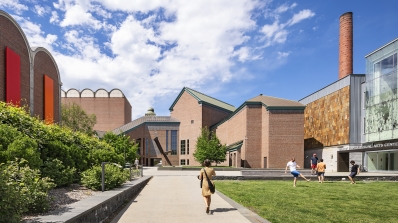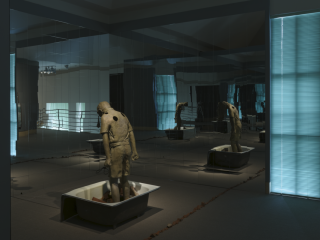Past Exhibitions
Burning as It Were a Lamp
Enrique Martínez CelayaSmall-Scale Art, the Viewer, and the Art World
Rejecting the DiminutiveContemporary Artists at Dartmouth
In ResidenceArticulating the Hand in Art
Hand AloneHighlights from the African Art Collection at the Hood Museum of Art
Evolving PerspectivesMuseum collections usually form in one of two ways—either by gifts or through curatorial purchases. At a college or university museum, however, faculty members can also influence purchases of works of art and material culture that reflect their research and teaching interests.
This installation of African art from the Hood Museum of Art presents a selection of objects that marks the trajectory of the collection's development and pays tribute to some of the people who shaped it. From the son of an early Dartmouth president to a professor in Dartmouth's anthropology department; from donors whose love of African art is reflected in the quality of the works they gifted to three curators who acquired memorable and important works during their tenures—all have contributed the Hood's mission to teach Dartmouth undergraduates and visitors of all ages about the diverse and rich art of the many cultures of this continent.



